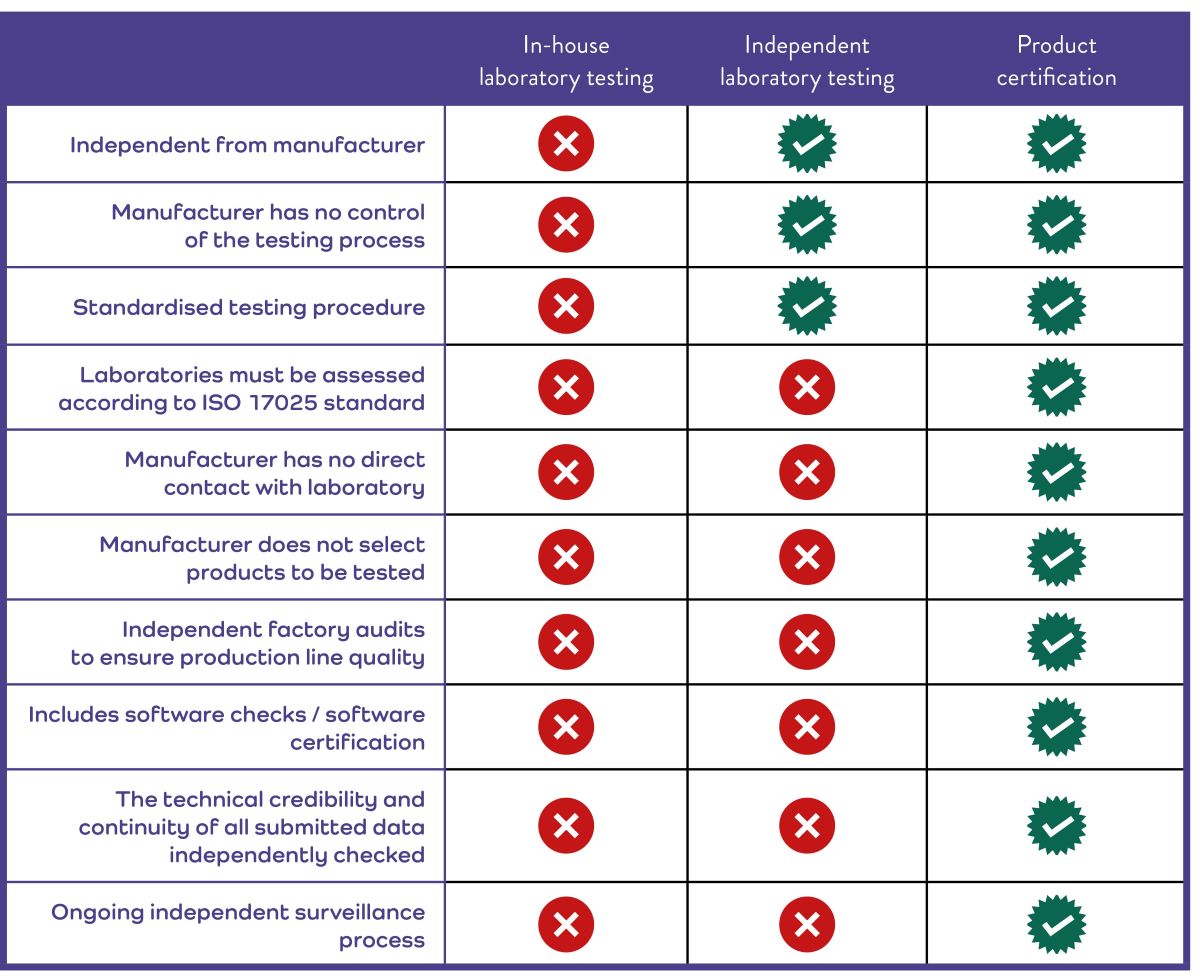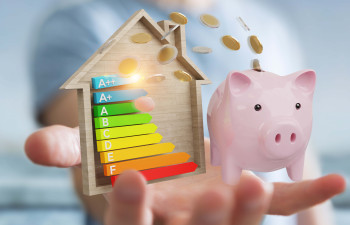CO2: The saviour of sustainability?
As the world grapples with climate change, low Global Warming Potential (GWP) refrigerants are paving the way for greener systems. Natural refrigerants such as carbon dioxide (CO2 / R-744) are being hailed as the solution to the refrigeration industry’s decarbonisation goals. While CO2’s green credentials are undeniable, will a swap to R-744 offer an instant reduction in carbon footprint, or is there more to meeting environmental targets? This article aims to explore the different factors affecting refrigeration system sustainability and explain why CO2 alone does not provide a silver bullet to net zero.
The benefits of CO2 as a green refrigerant
Let us be clear, there are many reasons why R-744 makes an excellent replacement for man-made refrigerants.
1) Environmental impact
CO2 has a Global Warming Potential of 1 and an Ozone Depletion Potential of 0. By switching to CO2, the industry can mitigate the direct emissions of potent greenhouse gases and significantly reduce the climate impact of leaks and improper disposal.
2) CO2 is naturally occurring and readily available in the environment
Unlike synthetic refrigerants, CO2 can be harnessed without significant environmental disruption.
3) A variety of energy efficient applications
When used in the right applications, CO2 refrigeration systems, (especially transcritical CO2 systems), are known for their energy efficiency. Ideal for commercial refrigeration and heat pumps in cooler climates, the efficiency gains experienced can further contribute to decarbonisation, by reducing the overall energy consumption.
4) Safety
CO2 is non-flammable, non-explosive and non-toxic, which is a key safety consideration.
5) Low mass volume
CO2 has a low mass volume, which allows for the installation of compact equipment and its use in small quantities.
6) Non-corrosive
CO2 is compatible with all materials as it is non-corrosive.
Limitations of CO2 as a green refrigerant
In many applications CO2 is a truly sustainable choice. However, there are limitations to relying solely on R-744 for decarbonisation goals.
1) Product testing challenges
All industry actors need reliable and accurate product performance data to specify, buy, design, install, maintain and operate refrigeration systems. However, the testing required to gain this data for CO2 refrigeration equipment is complex, with a high range of variables impacting on performance.
For example, there are hundreds of different methods to increase the performance of heat exchangers:
- Heat exchanger geometry, materials, angles of fins, and type has a considerable impact on the heat transfer coefficient, even when using the same end exchange area.
- When comparing two heat exchangers having the exact same type, geometry, and technology, and so the same heat exchange area, it is also possible for one of them have a much better performance.
- Refrigerant additives (nanofluids; nanoparticles dispersed in refrigerants or lubricants) can also improve the heat transfer coefficient depending on the type of heat exchanger.
- CO2 has its own unique properties, which require a unique testing process and correction factors to achieve accurate results.
For manufacturers providing their own product performance data, variations in self-assessment testing facilities, test equipment calibration, processes and procedures, adds to the above complications. Data that has not been independently verified, can be vulnerable to discrepancies between expected and declared performance. Therefore, decision makers cannot always tell by declared data alone if a product will perform as claimed.
2) Underperformance
Products that are specified based on incorrect data can:
- Use more energy and incur much higher running costs
- Create a larger carbon footprint
- Negatively impact on the performance and energy consumption of other parts of the system
- Be non-compliant with regulations
- Not meet end user requirements
- Be more prone to faults and breakdown
- Result in complaints, penalties and litigation
- Lead to reputational damage.
Additionally, any cost benefit from installing a cheaper product can be made redundant by the extra ongoing energy costs.
3) System design challenges
CO2 systems often require higher pressures to function effectively, which leads to more complex designs and sometimes higher energy demand and increased operational costs. The need for specialised materials and components that can handle high pressures also raises the initial capital investment for installing CO2 systems, making cost more of an issue.
4) CO2 is not a universal solution
R-744 is not an ideal refrigerant for all climates or applications. In warmer climates, CO2 systems can suffer from lower energy efficiency, which results in increased energy consumption to maintain desired cooling levels. This reduces the net environmental benefit and underscores the need for regional considerations in refrigerant choices.
Reducing carbon footprint
To achieve substantial reductions in carbon emissions, switching refrigerants alone is insufficient; energy efficiency must also be prioritised. But with the risk of inaccurate product performance data, how can decision makers identify truly energy efficient products, complete with critical information about how it will perform in their region?
Luckily, many manufacturers use third-party laboratories to independently validate their data. The use of independent laboratories greatly reduces bias in the testing routine. Additionally, third-party laboratories are often at the forefront of product testing, using the latest technologies and test methodologies to calculate actual performance. Some manufacturers go even further by certifying their products.
Certification takes independent laboratory testing and adds in additional levels of evaluation, such as factory audits and software checks. Products are also put under a surveillance process to ensure they continue to comply with declared data. Certification offers a comprehensive and stringent evaluation process. For example, the Eurovent Certified Performance programme for Heat Exchangers tests product performance across different nine defined regions, so decision makers can be confident of performance in the required climate.
Certification also removes direct contact between manufacturer and laboratory, offering true impartiality. Therefore, certification is often used as an identifier of high performing products, with the bonus that anyone can access certified data to select and compare products like-for-like.

Beyond refrigerant choice and energy efficiency, the cooling industry must embrace holistic design strategies. This includes designing buildings and infrastructure that reduce overall cooling demand through passive cooling techniques, waste heat recovery, and heat utilisation. Smart grids and Internet of Things (IoT) technologies can also optimise the performance of refrigeration systems, ensuring they operate only when needed and minimising energy waste.
Most importantly, purchase cost should not be the only priority. While it is true that the capital investment for installing CO2 systems can be larger than HFC systems, decision makers must look at the lifecycle of the system. Energy performance will have a far greater impact on system efficiency, carbon footprint and long-term running costs, often making a smaller purchase price a false economy.
Conclusion
The adoption of CO2 as a refrigerant is undoubtedly a positive step towards decarbonisation, offering significant reductions in direct emissions thanks to its low GWP and ODP, along with its natural abundance. However, CO2 is not a silver bullet. Systems need to be considered holistically, and not just in terms of purchase cost. Energy performance is vital, as is ensuring the correct refrigerant is selected for the climate and application.
Switching refrigerants alone is insufficient to achieve deep cuts in carbon emissions, energy performance plays an equally important role. By combining these efforts, the refrigeration and cooling industry can make meaningful strides towards carbon footprint reduction, supporting global decarbonisation efforts in a more impactful and lasting way.

Explore all the issues in our white paper, Broken Trust: Energy efficiency and the refrigeration industry. Delving into new research revealing a potential 31% gap between a product’s claimed and expected performance, the white paper explains the importance of reliable data and the impact of discrepancies on industry players.
Discover the key headlines from the latest research on CO2 heat exchangers, and crucially, the solutions and recommendations to ensure a match between an installed product’s claimed and expected performance.
Download it now!





